Nurses' perspectives on AI-Enabled wearable health technologies: opportunities and challenges in clinical practice
- PMID: 40598216
- PMCID: PMC12211443
- DOI: 10.1186/s12912-025-03343-y
Nurses' perspectives on AI-Enabled wearable health technologies: opportunities and challenges in clinical practice
Abstract
Background: Wearable health technologies, such as smartwatches, biosensor patches, and fitness trackers, have evolved from basic monitoring tools to advanced medical-grade devices capable of continuous health tracking. The integration of artificial intelligence (AI) enhances their utility by enabling real-time data analysis, early diagnosis, and personalised disease management. Adoption accelerated during the COVID-19 pandemic, reinforcing their role in remote care. However, concerns regarding data privacy, accuracy, cost, and reduced human interaction persist. This study explores nurses' perceptions, awareness, and trust in AI-enabled wearable devices, identifies facilitators and barriers to adoption, and assesses demographic influences on attitudes.
Methods: A total of 611 nurses were recruited using purposive sampling from educational hospitals in Saudi Arabia. Data were collected through an online structured questionnaire comprising demographic items, Likert-scale statements, and multiple-choice questions. Descriptive statistics and non-parametric tests (Kruskal-Wallis and Mann-Whitney U) were used to examine group differences.
Results: Findings revealed generally positive attitudes toward AI-enabled wearables, with nurses acknowledging their potential to support personalised care, chronic disease management, and healthcare efficiency. However, data accuracy, affordability, and technical reliability emerged as prevalent concerns. Statistically significant differences were observed based on age (p < 0.001), education level (p = 0.001), and workplace setting (p < 0.05), with younger nurses and those in hospital settings expressing greater confidence in AI-driven health insights.
Conclusion: While AI-enabled wearable devices are perceived as promising tools in nursing practice, concerns regarding data reliability, cost, and over-reliance on AI must be addressed. Structured training, institutional support, and clear guidelines are essential to ensure successful integration into clinical workflows and optimise their use in patient-centred care.
Clinical trial number: Not applicable.
Keywords: AI-Enabled wearables; Artificial intelligence in healthcare; Chronic disease management; Patient-centred care; Remote monitoring; Wearable health technologies.
© 2025. The Author(s).
Conflict of interest statement
Declarations. Ethical approval: All methods in this study were performed in accordance with the declaration of Helsinki and was approved by the Institutional Review Board (IRB) of Qassim University No. 23-19-02. All the participants provided informed consent to participate. In the case of the questionnaire-based study, all participants were informed of the voluntary nature, confidentiality, and aim of the study and the nature of their participation before they participated in the study. Consent for publication: Not applicable. Competing interests: The authors declare no competing interests.
Figures
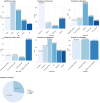

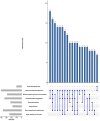

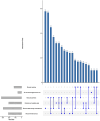
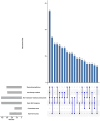
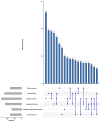
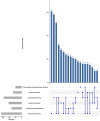
Similar articles
-
Navigating artificial intelligence in home healthcare: challenges and opportunities in nursing wound care.BMC Nurs. 2025 Jun 19;24(1):660. doi: 10.1186/s12912-025-03348-7. BMC Nurs. 2025. PMID: 40537760 Free PMC article.
-
Technology-enabled CONTACT tracing in care homes in the COVID-19 pandemic: the CONTACT non-randomised mixed-methods feasibility study.Health Technol Assess. 2025 May;29(24):1-24. doi: 10.3310/UHDN6497. Health Technol Assess. 2025. PMID: 40350743 Free PMC article.
-
Accreditation through the eyes of nurse managers: an infinite staircase or a phenomenon that evaporates like water.J Health Organ Manag. 2025 Jun 30. doi: 10.1108/JHOM-01-2025-0029. Online ahead of print. J Health Organ Manag. 2025. PMID: 40574247
-
Health professionals' experience of teamwork education in acute hospital settings: a systematic review of qualitative literature.JBI Database System Rev Implement Rep. 2016 Apr;14(4):96-137. doi: 10.11124/JBISRIR-2016-1843. JBI Database System Rev Implement Rep. 2016. PMID: 27532314
-
Artificial Intelligence in Healthcare: A Scoping Review of Medical Professionals' Acceptance and Institutional Challenges in Implementation.J Eval Clin Pract. 2025 Jun;31(4):e70170. doi: 10.1111/jep.70170. J Eval Clin Pract. 2025. PMID: 40581976
References
-
- Verma D, Singh KRB, Yadav AK, Nayak V, Singh J, Solanki PR, et al. Internet of things (IoT) in nano-integrated wearable biosensor devices for healthcare applications. Biosens Bioelectronics: X. 2022;11:100153.
-
- Iqbal SMA, Mahgoub I, Du E, Leavitt MA, Asghar W. Advances in healthcare wearable devices. Npj Flex Electron. 2021;5(1):9.
-
- European Parliamentary Research S. Digital transformation in healthcare. European Parliament; 2019.
LinkOut - more resources
Full Text Sources

